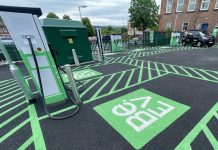The solar industry’s biggest trade body has praised the government’s intention to make installing solar panels on listed buildings more straightforward.
A review published this week considers how the 350,000 listed homes and 2.8 million in conservation areas can be more easily adapted to improve their energy efficiency.
Doing so “in a sensitive fashion is key to ensuring their long-term survival,” notes a ministerial foreword, as occupants are frequently paying higher energy bills than other households.
The review, jointly conducted by the Departments for Energy Security and Net Zero, Levelling Up, Housing and Communities and Culture (DLUHC), Media and Sport, broadly concurs with Solar Energy UK’s view that rules on installing solar panels on them are unduly complex and restrictive.
A common perception among contributors to the review was that, “obtaining planning permission or listed building consent took ‘too long’. Frustration among applicants and possible loss of financial support could result.
As things stand, certain energy upgrades require planning permission, some require separate listed buildings consent, whereas others require neither.
A way to cut through such red tape is already available, via Listed Building Consent Orders (LBCOs) which can authorise some alterations or extensions to listed buildings in England. LLBCOs may also be issued by English local authorities.
So far only one council, Kensington and Chelsea, has eased restrictions for solar on protected buildings. The London borough allows panels to be installed if they do not face roads in conservation areas and do not protrude more than 20cm from the roof.
The government review speaks positively about extending such provisions, not least because there is “significant variance” in how applications for solar photovoltaics are handled across the nation, “sometimes owing to poor planning knowledge and/ or practices”.
Now DLUHC will work with Historic England to issue clearer guidance on which energy efficiency measures require planning permission or listed building consent. Historic England will also publish planning advice for councils on climate change and historic buildings.
A consultation will follow on the role of LLBCOs and the potential for an LBCO to be made granting consent for certain upgrades across the whole of England. This could include solar panels.
“It is plain to see that there is far too much bureaucracy getting in the way of installing solar panels and other energy upgrades, where they can be done in an appropriate and respectful fashion, on England’s older buildings. So I am glad to see that the government is pushing forward with making the confusing series of existing rules clearer, while easing them in the longer term,” said Chris Hewett, Chief Executive of Solar Energy UK.
The government’s plan follows legislation issued late last year. Amendment No. 2 to The Town and Country Planning General Permitted Development Order extends permitted development rights for solar power to domestic flat roofs and most commercial buildings, including the establishment of a new permitted development right for solar canopies




